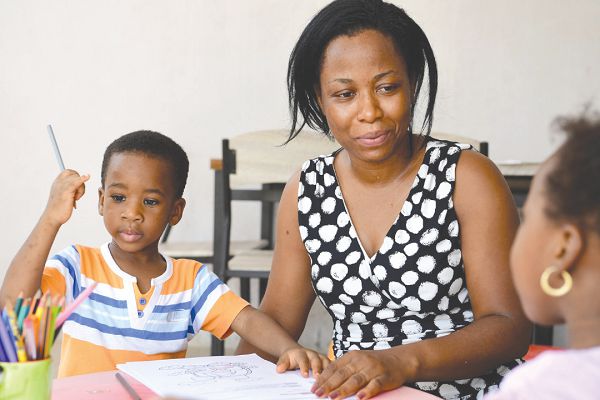
Identifying children with language difficulties in classrooms
A mother is holding her son. He suddenly looks at her and drops his face as if to cry when his bottle is put away.
She looks at him and says, “Oh, you’re thirsty. You want to drink water”.
Advertisement
Without saying more, she puts the bottle in his mouth and her son happily sips. This shows that communication goes beyond talking.
Communication is the transfer of information from one person to another and back. It involves speech and language skills.
Language is the organised use of symbols, words or signs put together to receive or relay a message.
Receptive language refers to what the child understands (input) while expressive language refers to what they produce, the language they use (output).
Speech is the act of speaking and includes the use of the tongue, lips, mouth and voice working together to produce sounds, words and sentences.
This is often referred to as pronunciation or articulation. Communication can be verbal and non verbal.
Verbal communication refers to both written and spoken language.
It often implies the use of words while non verbal communication refers to communication that occurs through other means such as gestures (pointing, waving, clapping) and body language.
The language pyramid shows the skills needed to be in place before children begin to talk.
It is often used by speech and language therapists to explain the difficulties children have in their communication development, as well as the rationale for the choice of intervention.
These skills include attention & listening, play, understanding, expressive language and speech.
Signs, difficulties with attention, listening skills
• Easily distracted
• Distracts other children
• May not appear to listen
• May not follow instructions
• Tires more easily and loses concentration
• Difficulty persevering with challenging work
• Responds off topic
Signs, difficulties with play skills
• Difficulty playing with others or in adult-led activities. Enjoys playing alone
• Not playing appropriately with toys (throwing and mouthing toys)
• Unable to initiate play
• Fixated on screens such as television, tablets, phones
• Not engaging in turn taking games
• Avoids eye contact
• Engages in limited or very repetitive activities
Signs, difficulty with receptive language skills/understanding
• Can’t follow instructions
• Doesn’t answer questions or gives inappropriate answers
• Poor understanding of topic vocab
• Difficulty grasping new concepts
• May be quiet or disruptive
Signs of difficulty with expressive language skills
• Difficulty expressing needs and wants
• Giving up trying to explain something and saying “I don’t know” or “I’ve forgotten”
• Avoidance behaviour
• Appearing embarrassed or frustrated
• Poor ability to express self
• Confused word order in sentences
• Deviates from the topic or shows circumlocution (“going all round the houses”)
• Problems answering questions
• Difficulties also observed in writing
Signs, difficulty with speech skills
• Not babbling by 7 months
• Difficulty pronouncing sounds correctly
• Substituting sounds e.g. ‘tat’ for ‘cat’
• Unclear speech
• Repeating sounds “sh-sh –shirt”
• Prolonging sounds in words such as “lllllllllllloooooong book”
Speech and language therapists assess the communication needs of both children and adult to and offer appropriate interventions.
The writer is a Speech & Language Therapist/Clinical Tutor,
University of Ghana.
E-mail: [email protected]



